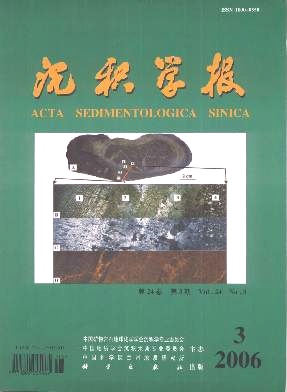Paleoclimatic Characteristics During Sedimentary Period of Main Source Rocks of Yanchang Formation (Triassic) in Eastern Gansu
- Received Date: 1900-01-01
- Rev Recd Date: 1900-01-01
- Publish Date: 2006-06-10
-
Key words:
- Ordos Basin /
- Yanchang Formation /
- sporopollen assemblage /
- paleoclimate
Abstract: A great number of sporopollen fossils have been discovered in Chang 8 and Chang 7 intervals of Yanchang Formation from drilling cores of Longdong area in the southwestern Ordos Basin, and they were named as AratisporitesPunctatisporites assemblage and AsseretosporaWalchiites assemblage,respectively. Their characteristics are similar to the sporopollen assemblages of Tongchuan Formation and Yanchang Formation discovered in the southeast of the basin, and the geologic times of the assemblages are Ladinian of the late Middle Triassic and Carnian of the early Late Triassic. Based on the environmental distribution of main plant types at present and the analysis of the content of types to recognize the relationship between palynological flora and the characteristics of stratagraphic distribution, we can infer that the climate was warm and moist then, rainfall was plentiful, and the vegetation was luxuriant during Middle Triassic and Late Triassic in Longdong area. The paleoclimate reflected by palynological flora was warmwet or hotwet in temperate to subtropical. The ecological types of palynological flora and the diversity curves of palynoflora indicate that the Chang 8 and Chang 7 phases were suitable period of continuously warm and humid in the area, and the extensive lacustrine transgression occurred in Chang 8 phrase during the development of lake as well as sustaining maximum flooding in Chang 7 phase. It was semihumidity temperate to subtropical climate during Middle Triassic and Late Triassic in northern China. The palynological flora discovered from the Chang 8 and Chang 7 intervals in Longdong area is obviously characteristic of the northern China flora. However, because the area was close to the large-scale lake at that time, and the Chang 7 and Chang 8 phases were the great prosperous period that lake was being expanded, so the characteristics of moister paleoenvironment was indicated. It was just because of longterm stable warm and wet climate and the extended deep lake environment that created conditions for largescale growth of hydrophilous alga, consequently they provided organic matter for the highquality source rocks of Chang 7 section in the area.
| Citation: | JI Liming. Paleoclimatic Characteristics During Sedimentary Period of Main Source Rocks of Yanchang Formation (Triassic) in Eastern Gansu[J]. Acta Sedimentologica Sinica, 2006, 24(3): 426-431. |






 DownLoad:
DownLoad: